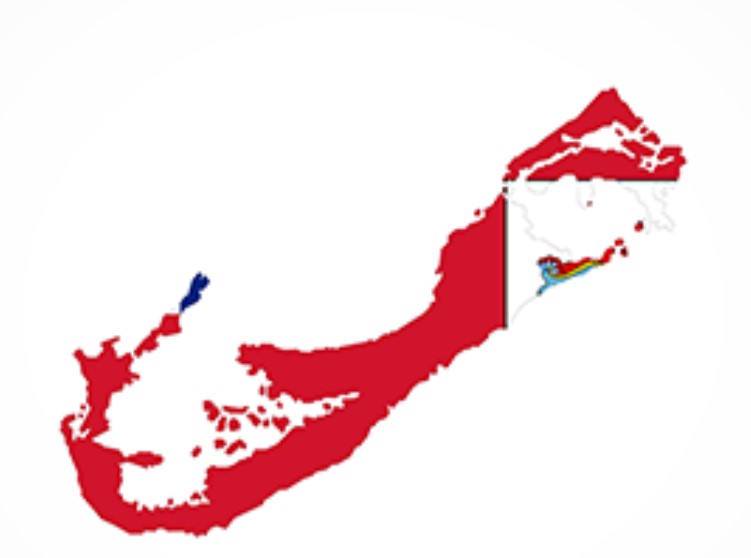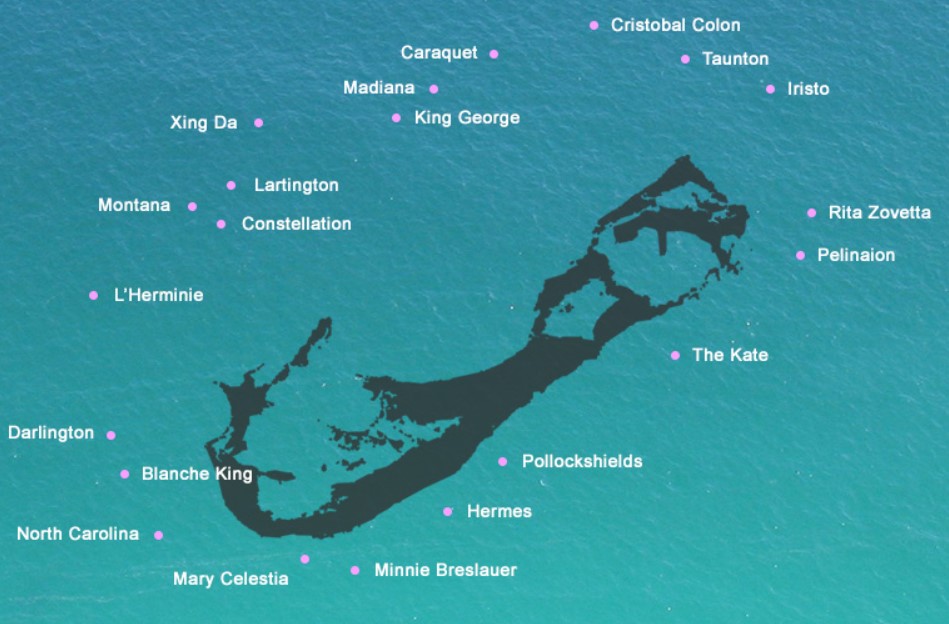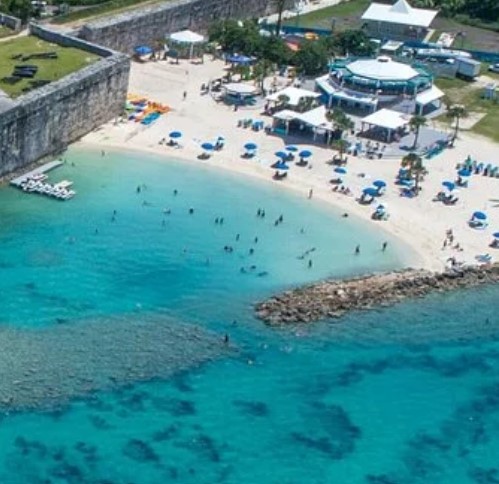Bermuda is another of those self-governing British overseas territories. This one lies in the western part of the North Atlantic Ocean. It is an archipelago of 7 main islands and about 170 islets and rocks.

Bermuda was first discovered by Juan de Bermúdez in the early 16th century but was not settled until the following century when in 1609, a shipwreck of the vessel Sea Venture stranded Bermuda’s first settlers. In 1612 sixty more English settlers were sent to colonise the island. Slavery continued in Bermuda until it was outlawed across the British Empire in 1833.
Like most people, the Bermuda Triangle and beaches were about all I knew about the area before getting here. Let’s start with size, it is very small (30km long and 3 km wide at its widest) and the whole place only has about 65,000 people.
The Bermuda Triangle
The Bermuda Triangle, also known as the Devil’s Triangle, is a geographic region in the western part of the North Atlantic Ocean where many planes and ships are believed to have disappeared under mysterious circumstances.

While the Bermuda Triangle is not an officially recognized area, it is possible to display the Bermuda Triangle on a map since its boundaries are generally considered to be between Miami, Bermuda, and Puerto Rico (each location being one of the three points of the triangle).
Despite the claims of ships and planes mysteriously going missing within this triangular region, the scientific evidence suggests that the Triangle is no more dangerous than any other part of the ocean.

The idea of the Bermuda Triangle arose in the mid-20th century after some media reporting that detailed the loss of several planes and ships since World War II. Triangle writers have used a number of supernatural concepts to explain the events. Some hypothesise that a parallel universe exists in the Bermuda Triangle region, causing a time/space warp that sucks the objects around it into a parallel universe. Others attribute the events to UFOs. One explanation pins the blame on leftover technology from the mythical lost continent of Atlantis.
Made up of a string of islands in the Sargasso Sea, Bermuda is famous for its picturesque beaches and the reefs that ring the islands, making it one of the world’s top diving destinations. It is famous for pink sand beaches (that get their colour from pulverized coral and shells).


Our first foray into Bermuda was a bit of a fizzer as it was a short day (about 5 hrs available). We were booked to do a snorkelling tour of two shipwrecks (the Constellation and the Montana).
The day we arrived was at the tail of a hurricane, meaning that windspeeds and wave heights were too strong for us to snorkel safely in the open water, so the trip got cancelled. As it was the middle of the time available we had kind of, cut ourselves out of time to poke about the town.






They offered either our money back or a glass bottom boat booze cruise with all the rum punch you can drink. The booze cruise did not appeal so we had a cursory glance around the port area, and that was about all we got to see or do. Thankfully we were due to return 10 days later.
Both times we arrived at the Royal Naval Dockyard, a former British Royal Navy base turned into a cruise ship terminal and tourist hotspot. The Navy established the Dockyard after their defeat in the American war of independence which left Britain without a secure mid-Atlantic anchorage.





Our second foray was again at the tail of a weather event meaning that the snorkelling trip would still not be on. The obvious thing to do was to hop on the ferry and head over to the main town of Hamilton. But in the leadup, we had a conversation with a regular visitor to the island who told us of the all-day (24-hour) ferry ticket.
As we were in port for about 40 hours this time around, we had more time and could explore more broadly. When we had an overnight in Cartagena, Colombia we got off and stayed on shore amongst the locals and had a great time. So we looked into the same thing here in Bermuda. A single night’s accommodation in Bermuda ran to about $1000 AUD. So we did not do that.
Instead, we were up early and on the first ferry away from the port and up to the town of St Georges. The entry to the port was past some historic forts and through a couple of narrow groins (that took us two attempts to line up right). And it was a good thing that we were up and out as the wind whipped up and the St Georges port was closed shortly after our arrival.



St Georges (and its fortifications) was Bermuda’s first capital, founded in 1612, and is the oldest continually inhabited English settlement in the New World. The town overflows with cobblestone alleys and 17th and 18th century architecture.






The town was nice, but with a population of around 1500, as you would imagine, it didn’t take us long to see the place. From here our all-day ticket gave us access to the round island bus. So we hopped the number 1 bus and explored and lapped the whole island.
Through the golf courses, along the narrow lanes, past the crystal caves and some stunning beaches and on to the capital, Hamilton. If St Georges was small at 1500, then Hamilton only had 900. It was set up as the business and shopping district but virtually nobody lived here.








From here it was back on a ferry and a return to the port (getting drenched in the process) for a nap before heading out again. We had booked in that evening to have dinner at the Frog and Onion Pub, an allegedly iconic venue. So after a warming shower, we were out again, for what was a very short visit.
The area around the port was really pretty, but our arrival at the Frog and Onion saw an extortionate menu of both food and beverages. Jill checked it out and found that food in Bermuda was on average 65% more expensive than in New York City. We ordered a beer each (over $50) after tax and tip, glanced at the menu and decided to get back on the ship and eat our meal on the boat.





The next morning it was up to explore the dockyards more fully (the day before had been cut short due to weather and everything closing at 6pm). What looked like a second large fort on top of the hill was our target. We figured that we could get a fair exercise wandering about that. But no.




It was in such a state of disrepair that it was closed to the public and some sketchy photos through the fence were the best we could do. The only other thing left on the docks was the clocktower shopping centre, the expected collection of t-shirts and trinkets for the old people not willing to explore further than the immediate dock area (there are more of these than you would imagine).

The Bermuda Aquarium Museum and Zoo houses a collection of marine life, including sharks, turtles and colorful coral reefs. You can also explore the zoo, which is home to a diverse range of animals.
Snorkel Park Beach sits almost directly behind the dockyards and offers white sand, bars and restaurants. It is the closest and easiest snorkelling and swimming spot that you can simply walk to.
But it will cost you $15 each to get in, $40 (each) if you want a lounger and another $20 if you want an umbrella.

Bermuda was nice enough, but the weather hampered our snorkeling aspirations. We are glad that we came but the exorbitant pricing probably leaves it in the ‘been there done that’ category rather than the ‘must come back to’ one.